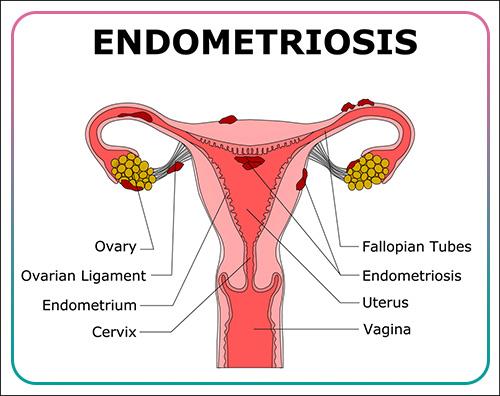Endometriosis is a complex and often painful condition that affects millions of women worldwide. In this comprehensive guide, we'll delve into what endometriosis is, its symptoms, potential causes, and the various treatment options available.
What is Endometriosis?
Endometriosis is a disorder in which tissue similar to the lining inside the uterus, known as the endometrium, grows outside the uterus. This tissue can be found on the ovaries, fallopian tubes, and other pelvic organs. Unlike the lining of the uterus, which sheds during menstruation, the tissue outside the uterus has no way to exit the body. This can lead to inflammation, scarring, and the formation of painful adhesions.
Symptoms of Endometriosis:
The symptoms of endometriosis can vary widely from person to person, but common signs include:
- Pelvic pain: This is the most common symptom of endometriosis and can range from mild to severe. The pain may occur before, during, or after menstruation and may worsen over time.
- Menstrual irregularities: Women with endometriosis may experience heavy or irregular periods, as well as spotting between periods.
- Pain during intercourse: Endometriosis can cause pain during sexual intercourse, known as dyspareunia.
- Infertility: Endometriosis is a leading cause of infertility in women. The presence of endometrial tissue outside the uterus can interfere with ovulation, fertilization, and implantation.
- Gastrointestinal symptoms: Some women with endometriosis may experience gastrointestinal issues such as bloating, constipation, or diarrhea, especially during menstruation.
Causes of Endometriosis:
The exact cause of endometriosis is not fully understood, but several factors may contribute to its development, including:
- Retrograde menstruation: This occurs when menstrual blood flows backward through the fallopian tubes into the pelvic cavity instead of leaving the body through the vagina.
- Hormonal imbalances: Estrogen, a hormone that regulates the menstrual cycle, may promote the growth of endometrial tissue outside the uterus.
- Immune system dysfunction: Problems with the immune system may prevent the body from recognizing and destroying endometrial tissue growing outside the uterus.
- Genetic factors: Endometriosis tends to run in families, suggesting that certain genetic factors may predispose individuals to the condition.
Treatment Options:
While there is currently no cure for endometriosis, several treatment options are available to help manage symptoms and improve quality of life. These include:
- Pain medication: Over-the-counter pain relievers such as ibuprofen or acetaminophen may help alleviate pelvic pain associated with endometriosis.
- Hormonal therapy: Hormonal medications such as birth control pills, hormonal IUDs, or gonadotropin-releasing hormone (GnRH) agonists can help regulate the menstrual cycle and reduce the growth of endometrial tissue.
- Surgery: In more severe cases of endometriosis, surgery may be recommended to remove endometrial implants, scar tissue, or cysts.
- Fertility treatments: For women struggling with infertility due to endometriosis, fertility treatments such as in vitro fertilization (IVF) may be recommended.
Conclusion:
Endometriosis is a chronic and often debilitating condition that can have a significant impact on a woman's physical and emotional well-being. By understanding the symptoms, causes, and treatment options available, individuals affected by endometriosis can work with their healthcare providers to develop a personalized treatment plan that best meets their needs. If you suspect you may have endometriosis, it's important to seek medical attention for an accurate diagnosis and appropriate management.
